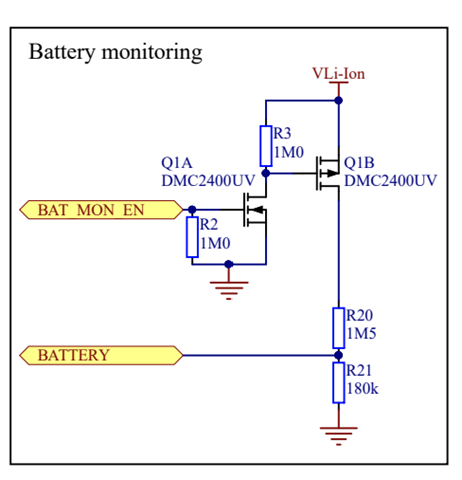Hello,
I am designing a battery monitoring circuit for a 3.0V CR2032 coin cell using the nRF52840, and had some questions. I am following the battery monitoring circuit used on the Thingy52 DK as a reference:

I understand how most of this circuit works, except for the values chosen for R20 and R21. How should I go about choosing these values? From the following thread, it sounds like we want to have this voltage divider so the battery voltage can be divided down to the bandgap voltage: ADC to measure battery voltage
I have been unable to find the bandgap voltage for the nRF52840 from the data sheet, and would like to know a bit more about the bandgap voltage and why it is useful.
Another concern I have is measuring the battery voltage as it drifts. Over time, the battery will obviously deplete (which is why we want to monitor it), and I would like to know how this will impact our ADC readings as the reference voltage will be changing.
I am open to any other suggestions regarding this problem.
Thanks in advance!


